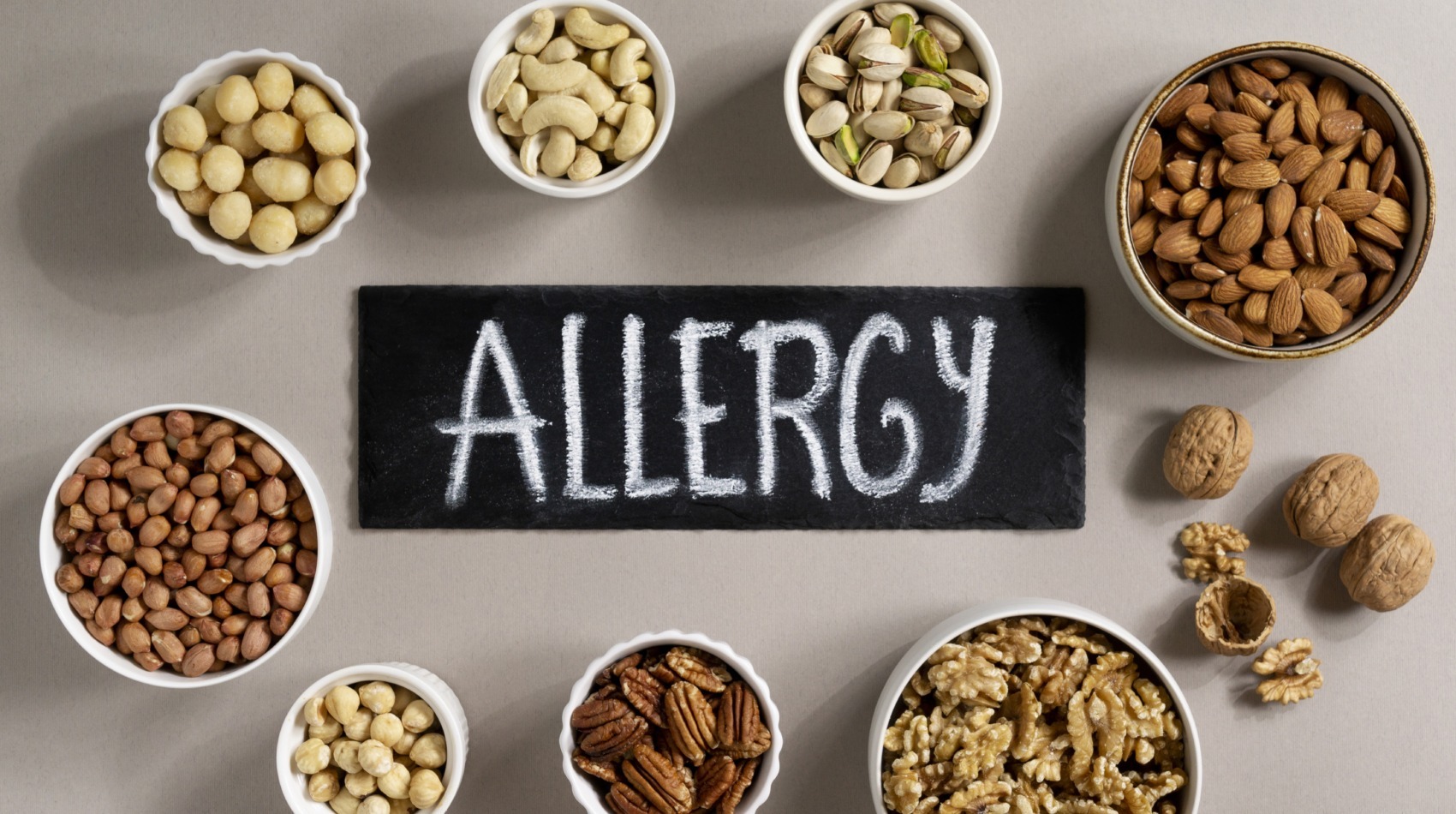Nut allergies are among the most common food allergies, affecting millions of people worldwide. For those living with nut allergies, navigating daily life can be challenging, as even trace amounts of nuts can trigger severe allergic reactions. Understanding the nature of nut allergies and learning how to prevent and manage the associated risks is crucial for individuals, families, and communities. Let’s delve into the world of nut allergies, explore their causes and symptoms, and discover effective strategies for prevention and risk management.
Understanding Nut Allergies:
What Causes Nut Allergies?
Nut allergies occur when the immune system mistakenly identifies proteins found in nuts as harmful invaders. Upon exposure to nuts or nut-derived products, the immune system mounts an allergic response, releasing histamines and other chemicals that cause symptoms ranging from mild itching to life-threatening anaphylaxis.
Common Nut Allergens:
While any type of nut has the potential to trigger an allergic reaction, certain nuts are more commonly associated with allergies than others. These include peanuts (which are technically legumes), as well as tree nuts such as almonds, cashews, walnuts, and pistachios.
Symptoms of Nut Allergies:
Nut allergy symptoms can vary widely in severity and may include:
Skin reactions (hives, itching, eczema)
Digestive issues (nausea, vomiting, diarrhea)
Respiratory problems (nasal congestion, wheezing, difficulty breathing)
Anaphylaxis (a severe, life-threatening reaction involving multiple systems)
Read Labels and Ingredient Lists:
Individuals with nut allergies must become diligent label readers, checking product labels and ingredient lists for any mention of nuts or nut-derived ingredients. Even foods that do not contain whole nuts may still pose a risk due to cross-contamination during manufacturing.
Communicate Allergies Clearly:
Whether dining out, attending social gatherings, or sending children to school, clear communication about nut allergies is essential. Informing servers, hosts, teachers, and caregivers about nut allergies ensures that appropriate precautions can be taken to avoid accidental exposure.
Choose Nut-Free Alternatives:
Opting for nut-free alternatives and substitutions in recipes and meals can help minimize the risk of accidental exposure. Many nut-free options are available, including seed butters (such as sunflower seed butter), soy-based products, and coconut-based ingredients.
Carry Emergency Medication:
Individuals with nut allergies should always carry an epinephrine auto-injector (such as an EpiPen) with them at all times. In the event of an allergic reaction, prompt administration of epinephrine can help reverse symptoms and prevent a life-threatening reaction.
Create Nut-Free Environments:
In schools, workplaces, and other communal settings, establishing nut-free zones or policies can help create safer environments for individuals with nut allergies. This may involve implementing allergen-aware policies, educating staff and peers about nut allergies, and providing alternative snack options.
Stay Informed and Educated:
Keeping up-to-date with the latest research, guidelines, and resources related to nut allergies is essential for effectively managing the condition. Joining support groups, attending educational workshops, and consulting with healthcare professionals can provide valuable information and support.
Nut allergies present unique challenges for individuals and families, but with understanding, prevention, and effective management strategies, the risks associated with nut allergies can be minimized. By taking proactive steps to avoid nut exposure, communicating allergies clearly, and being prepared to respond to allergic reactions, individuals with nut allergies can lead safe and fulfilling lives. Together, we can create environments that are inclusive and supportive of everyone, regardless of their nut allergy status.


